CBSE Class 10 Science 2020 Question Paper with Solutions - Free PDF Download
Free PDF download of CBSE Board class 10 Science 2020 question paper. The three hours written exam paper of maths is solved and the answer key of the questions is given at the end of the question paper. In this article, we are providing you CBSE Science 2020 previous year solved question paper for class 10. In this 2020 CBSE Science exam paper, the paper is divided into three sections for 80 marks.
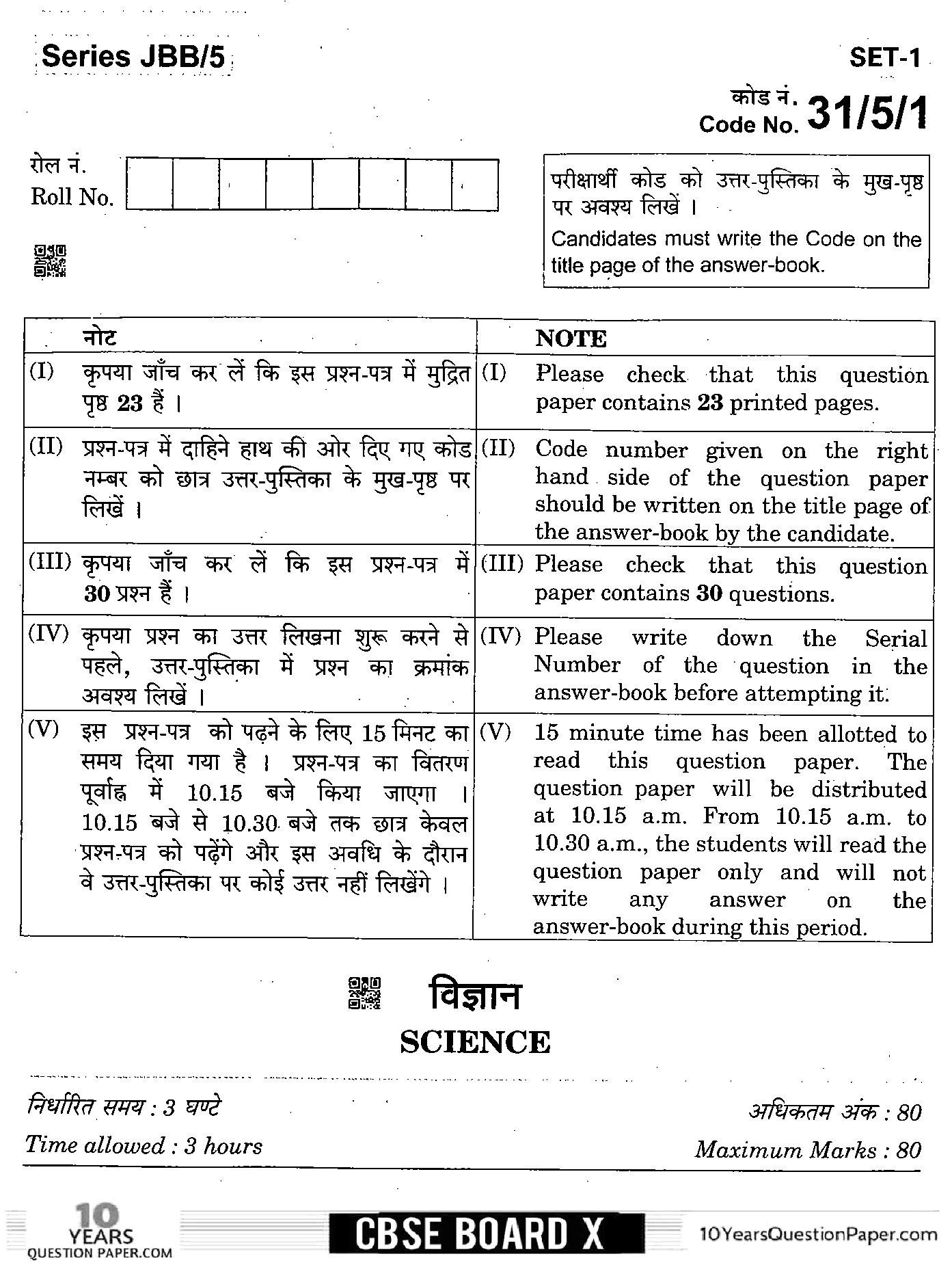
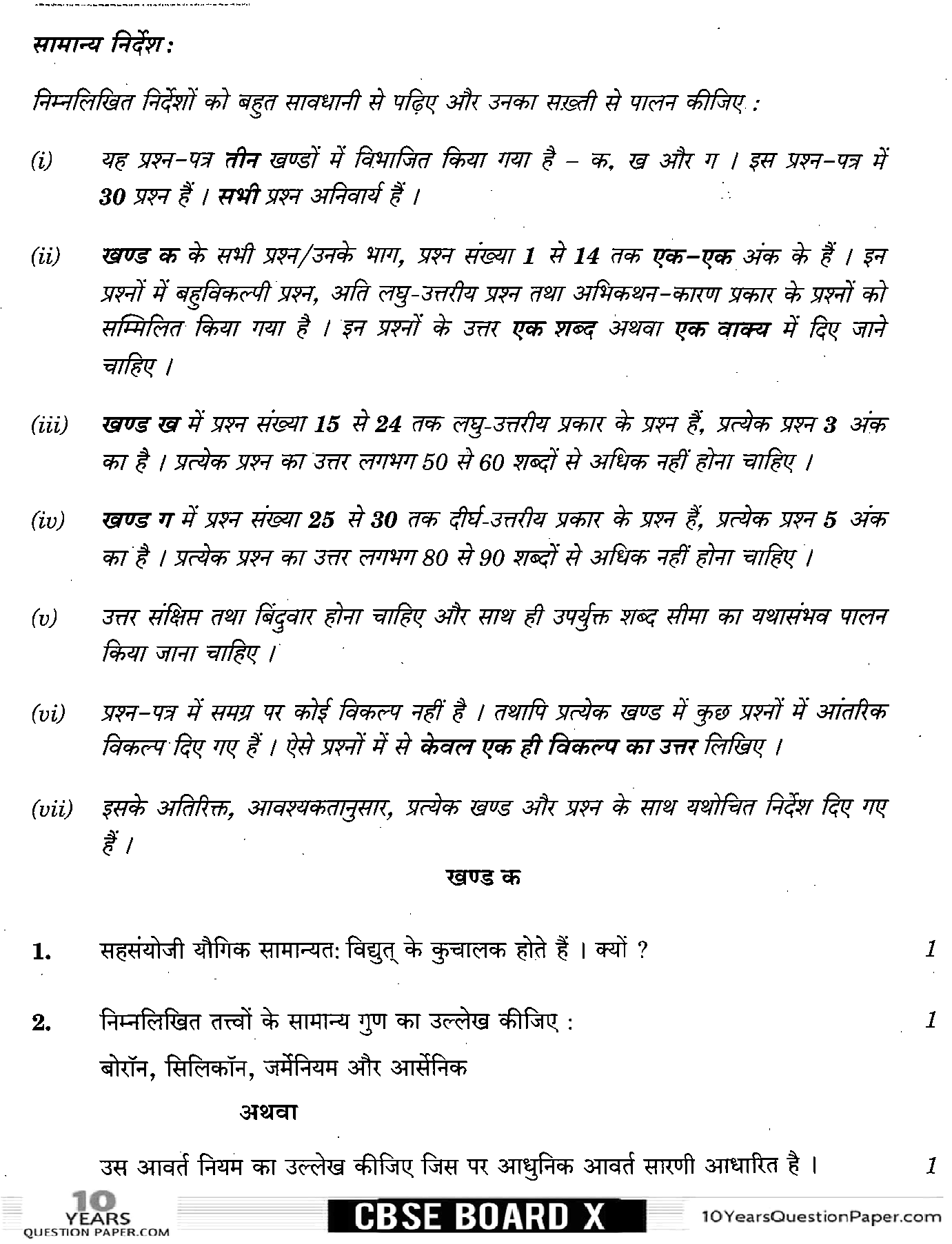
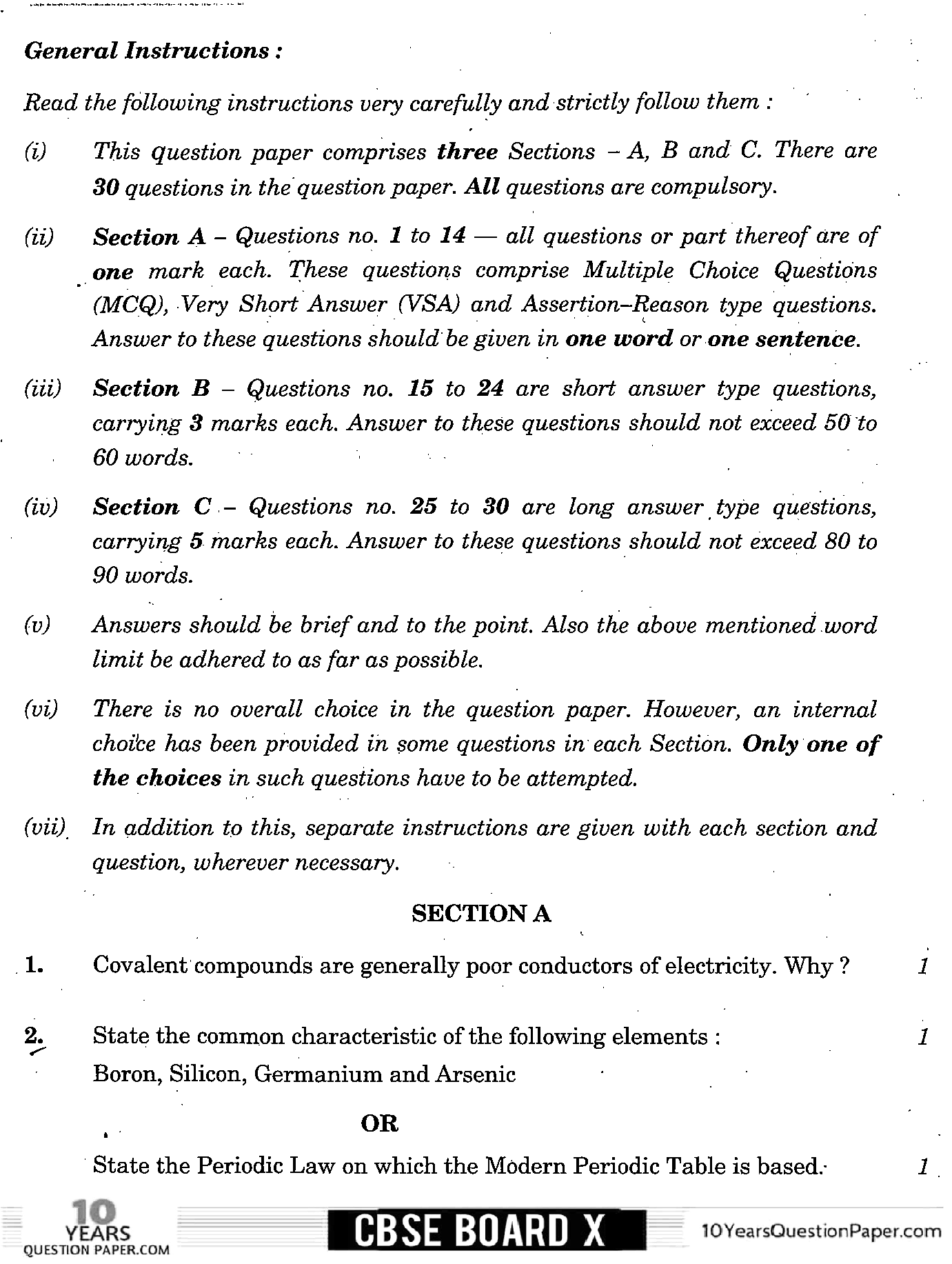
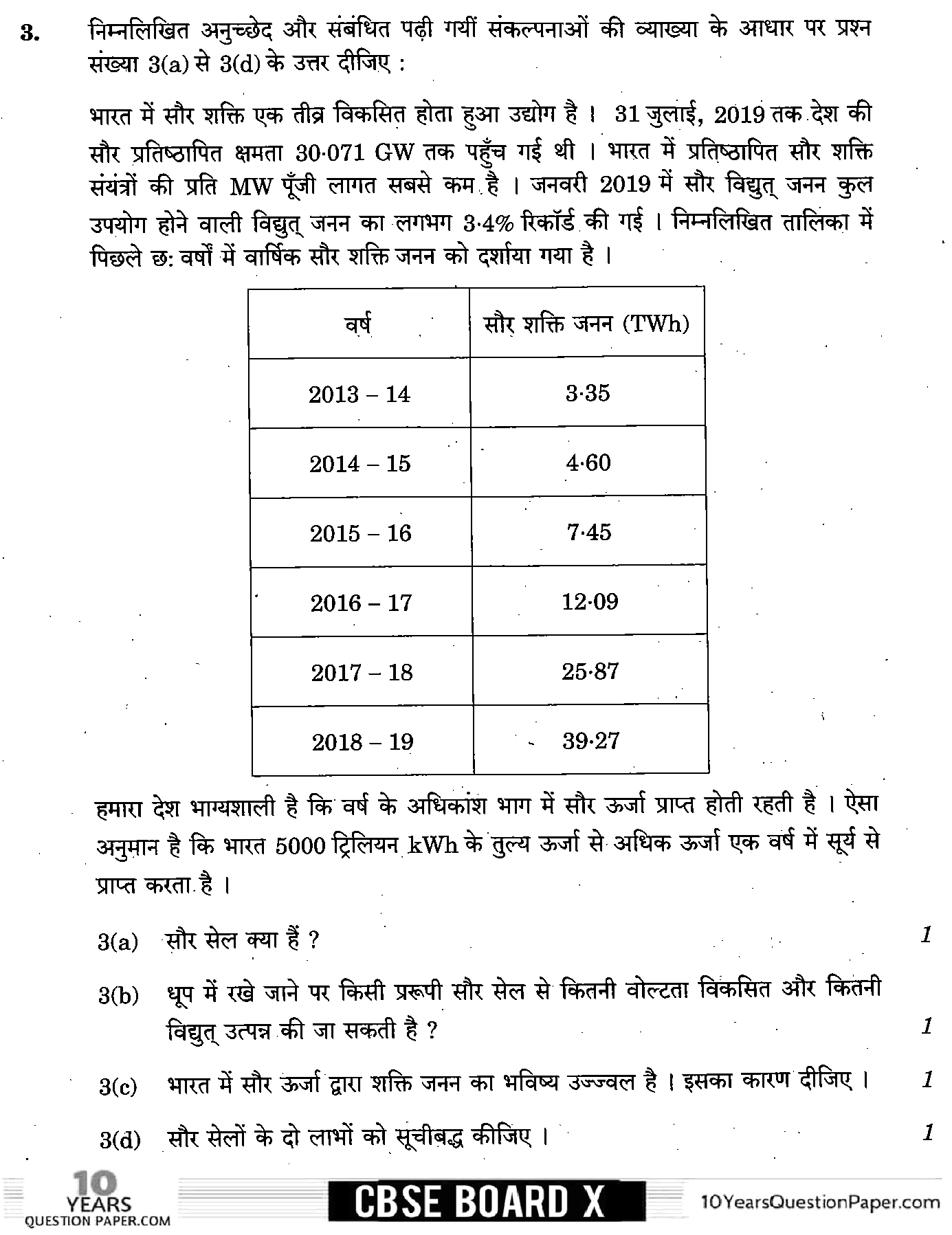
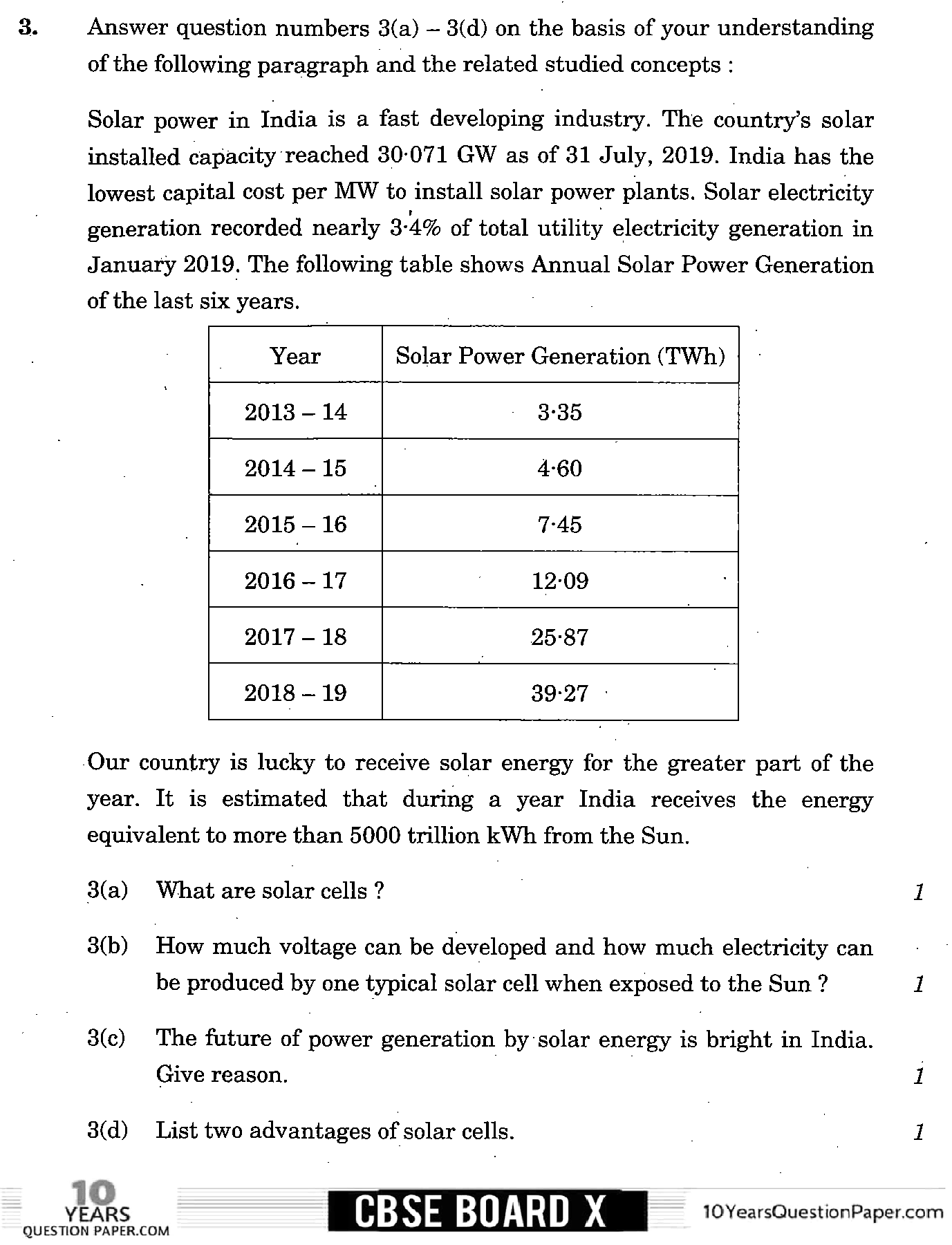
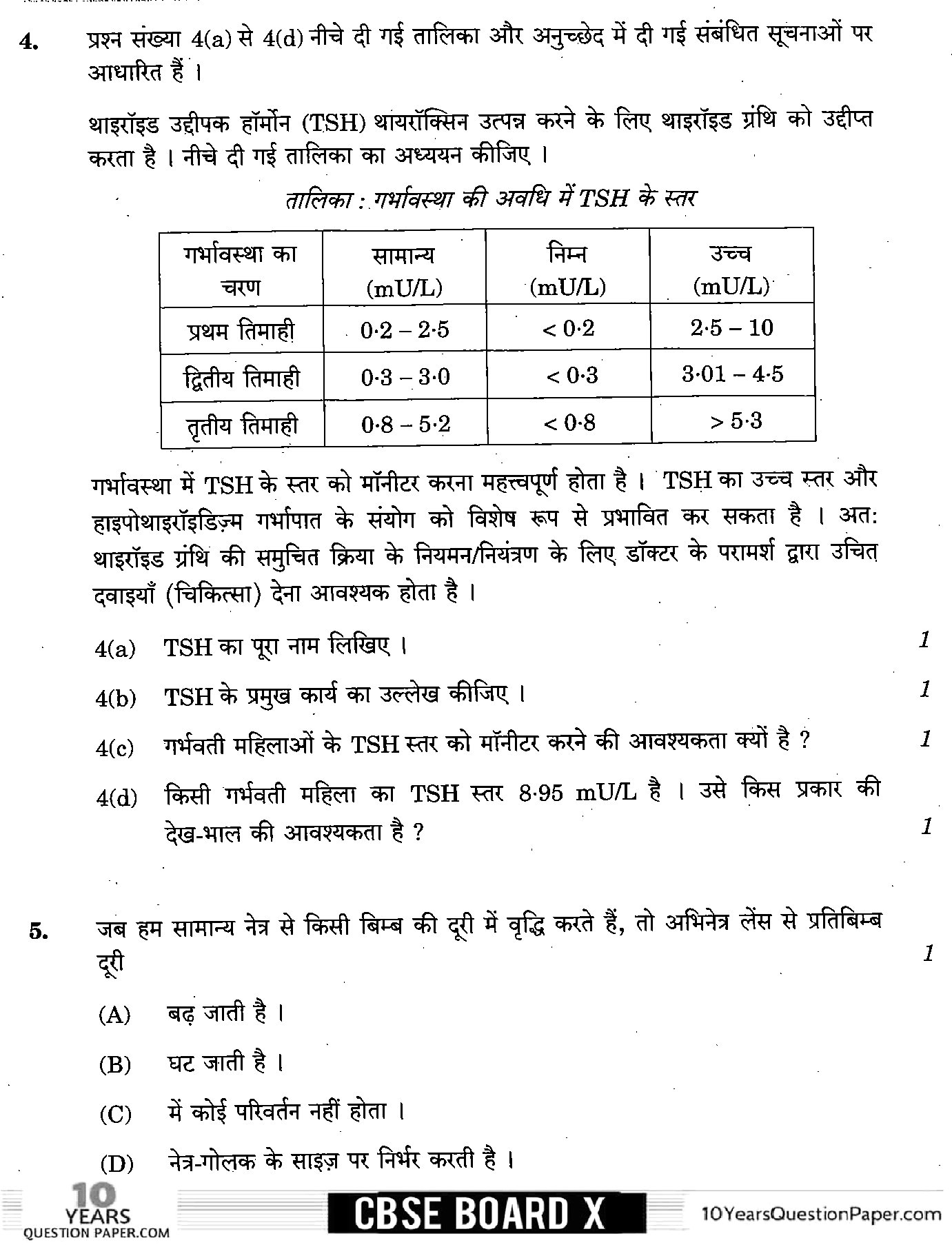
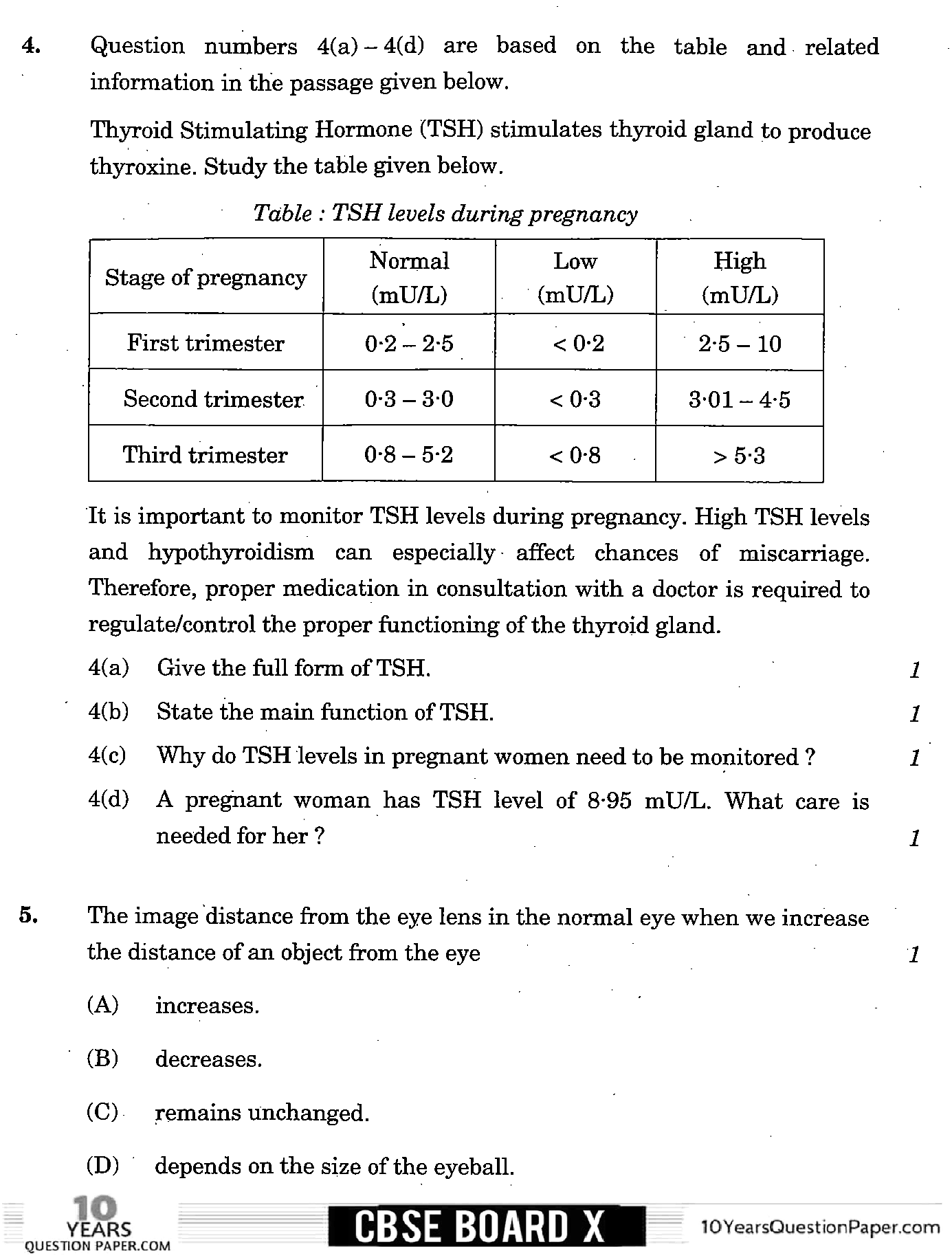
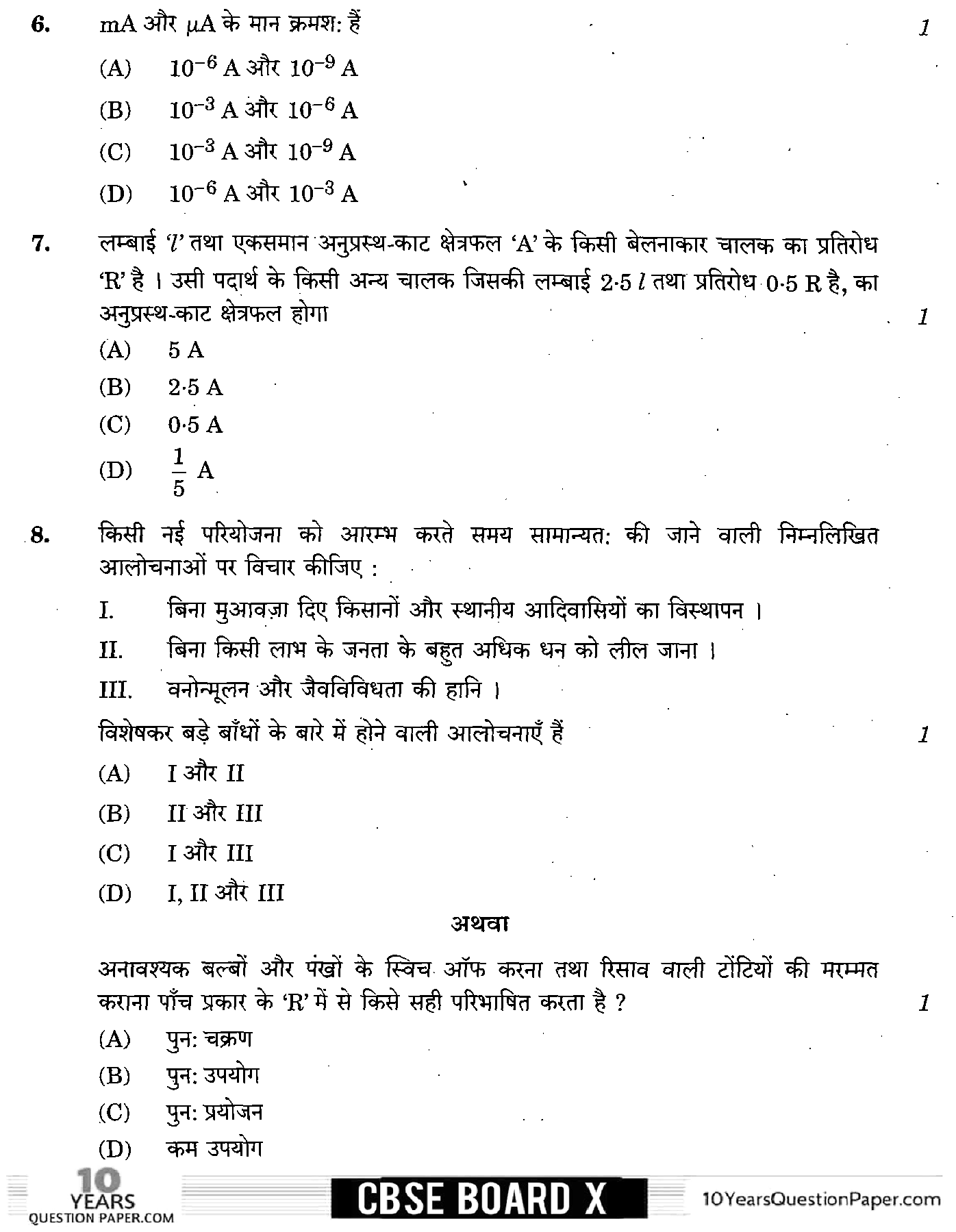
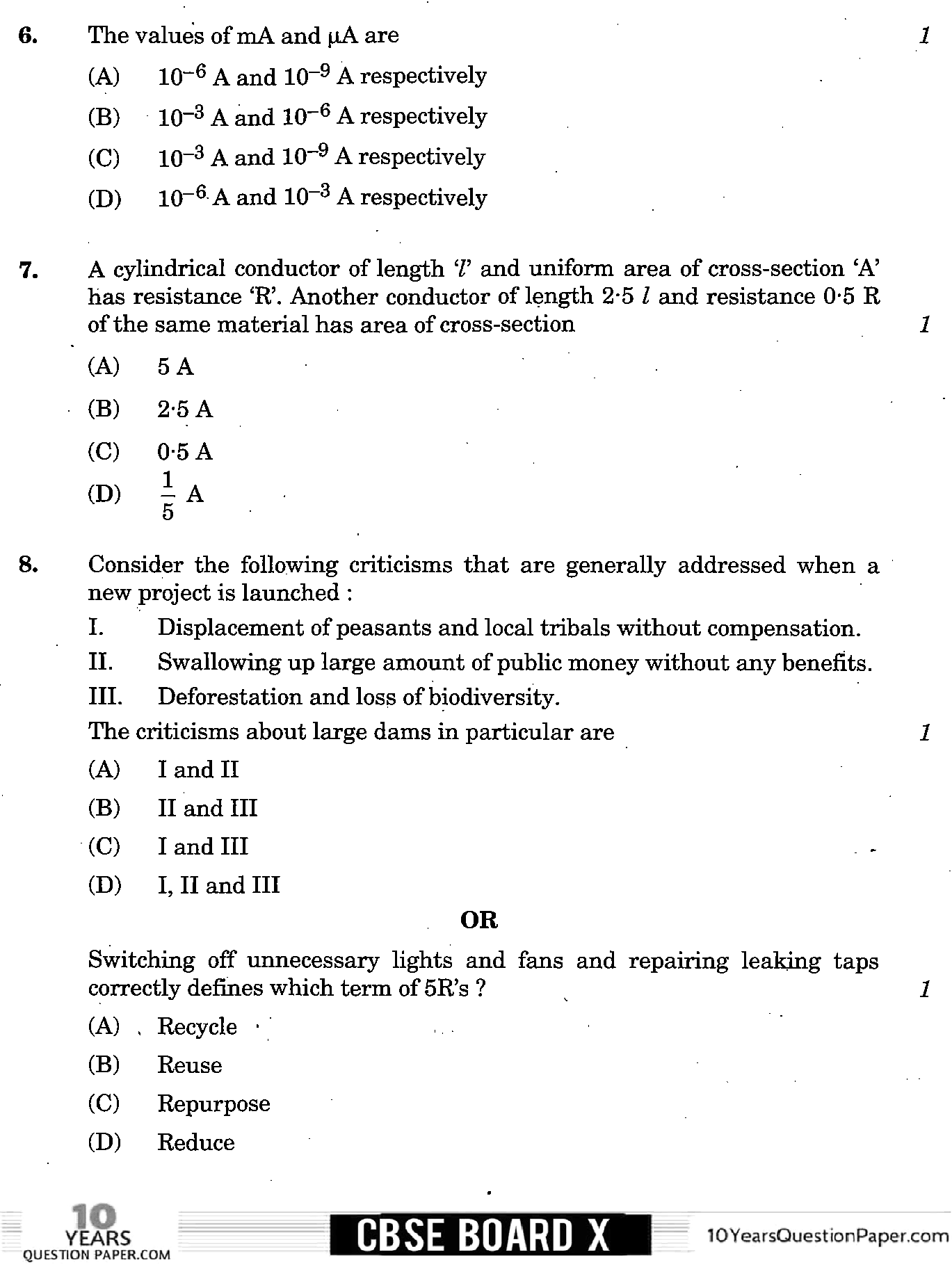
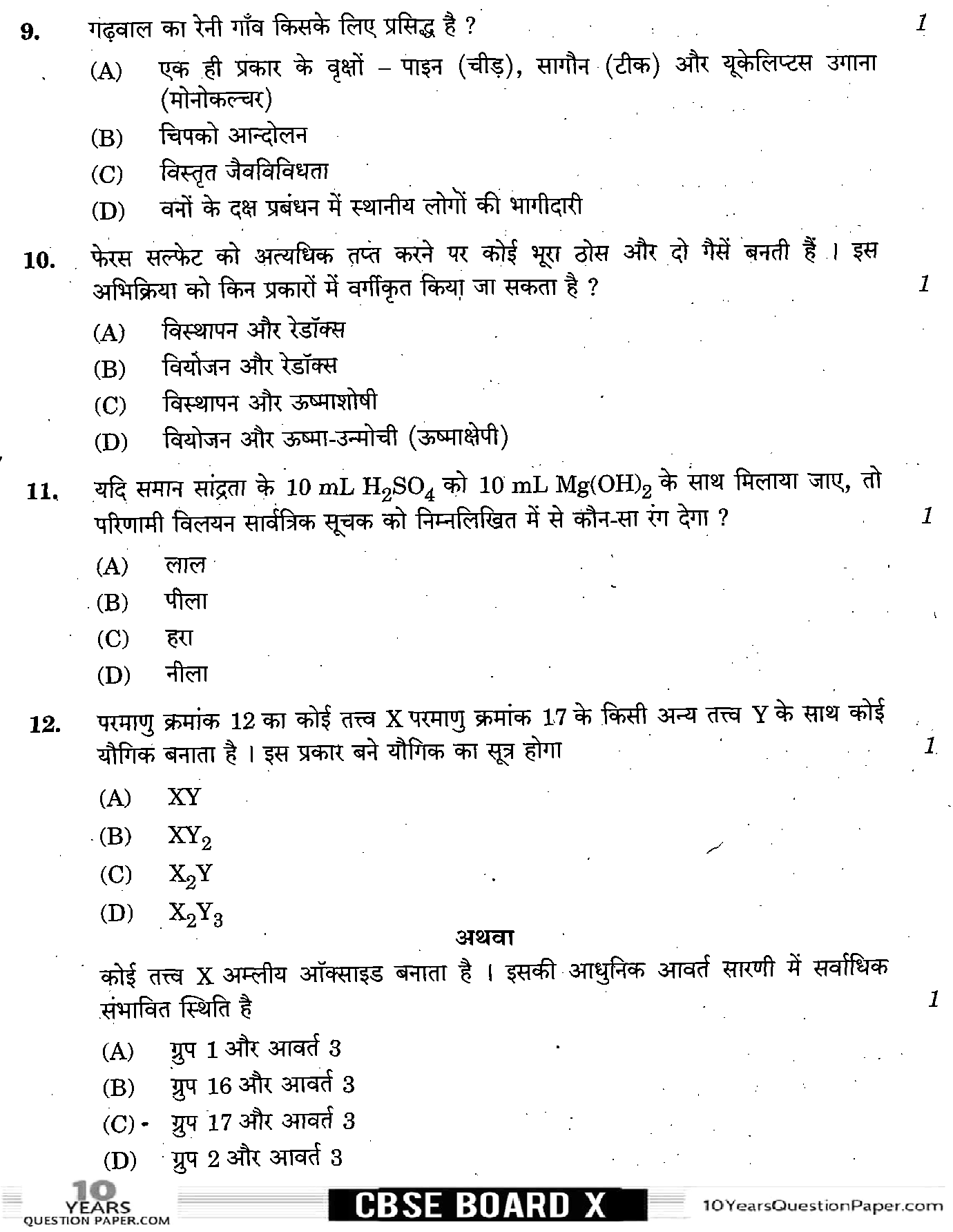
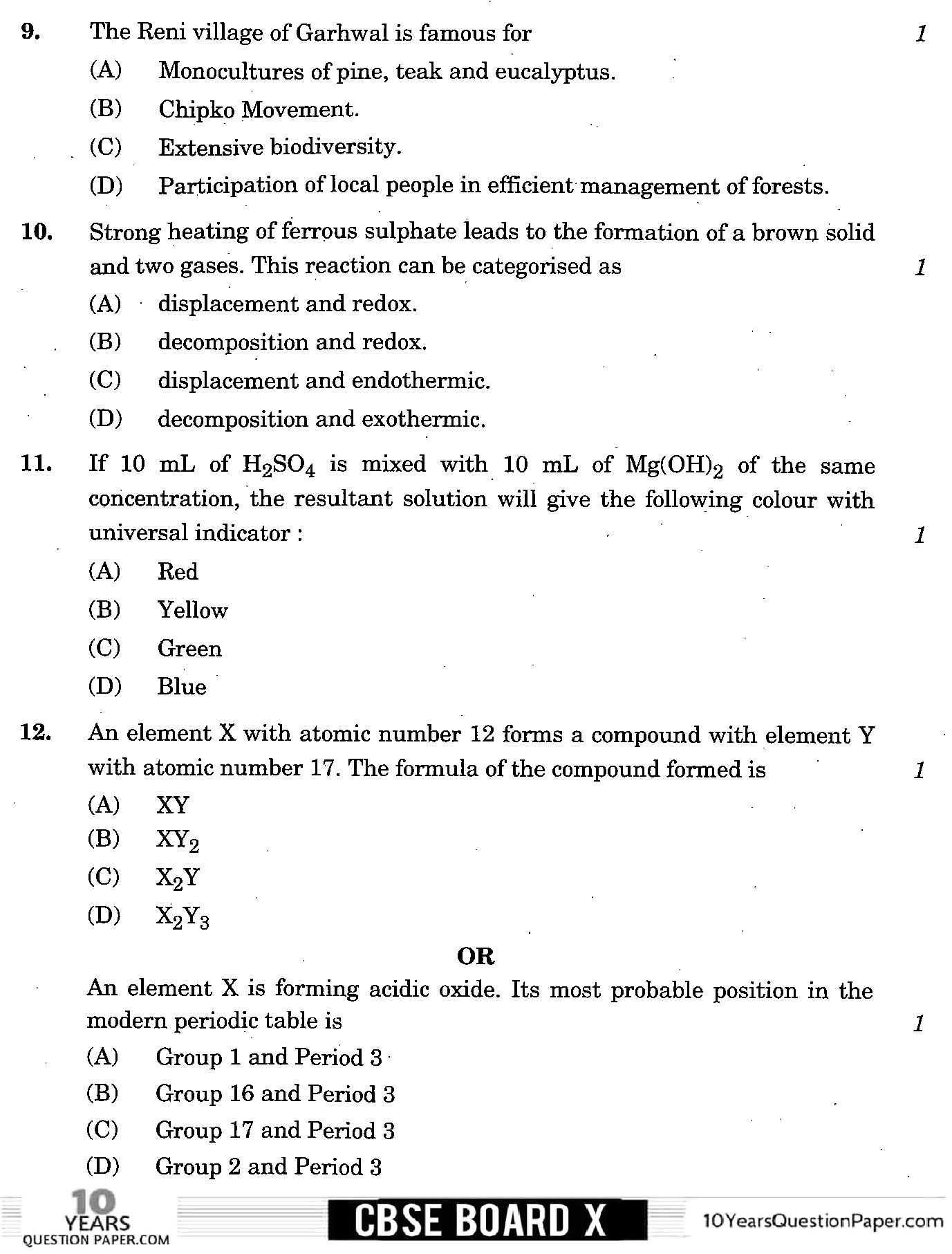
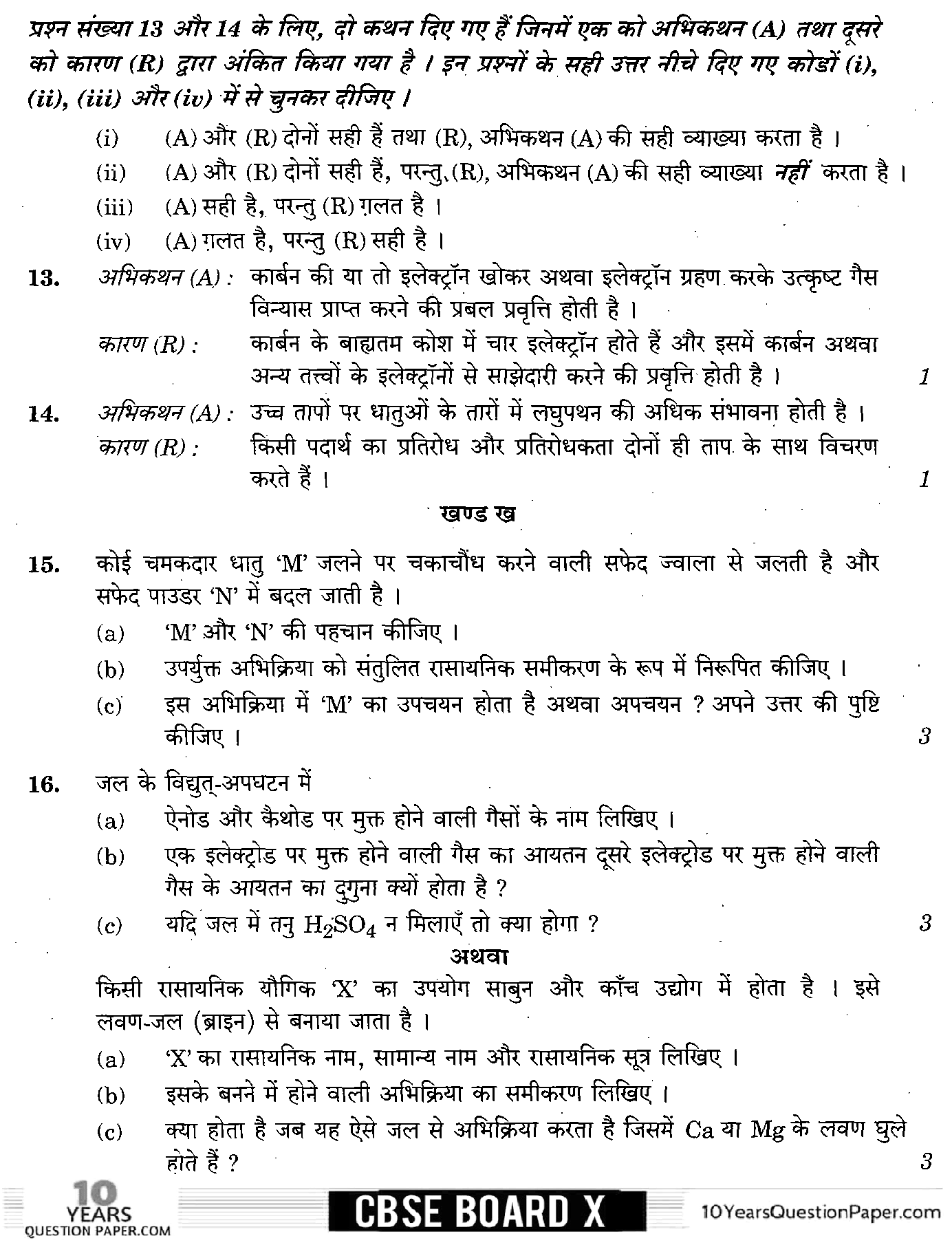
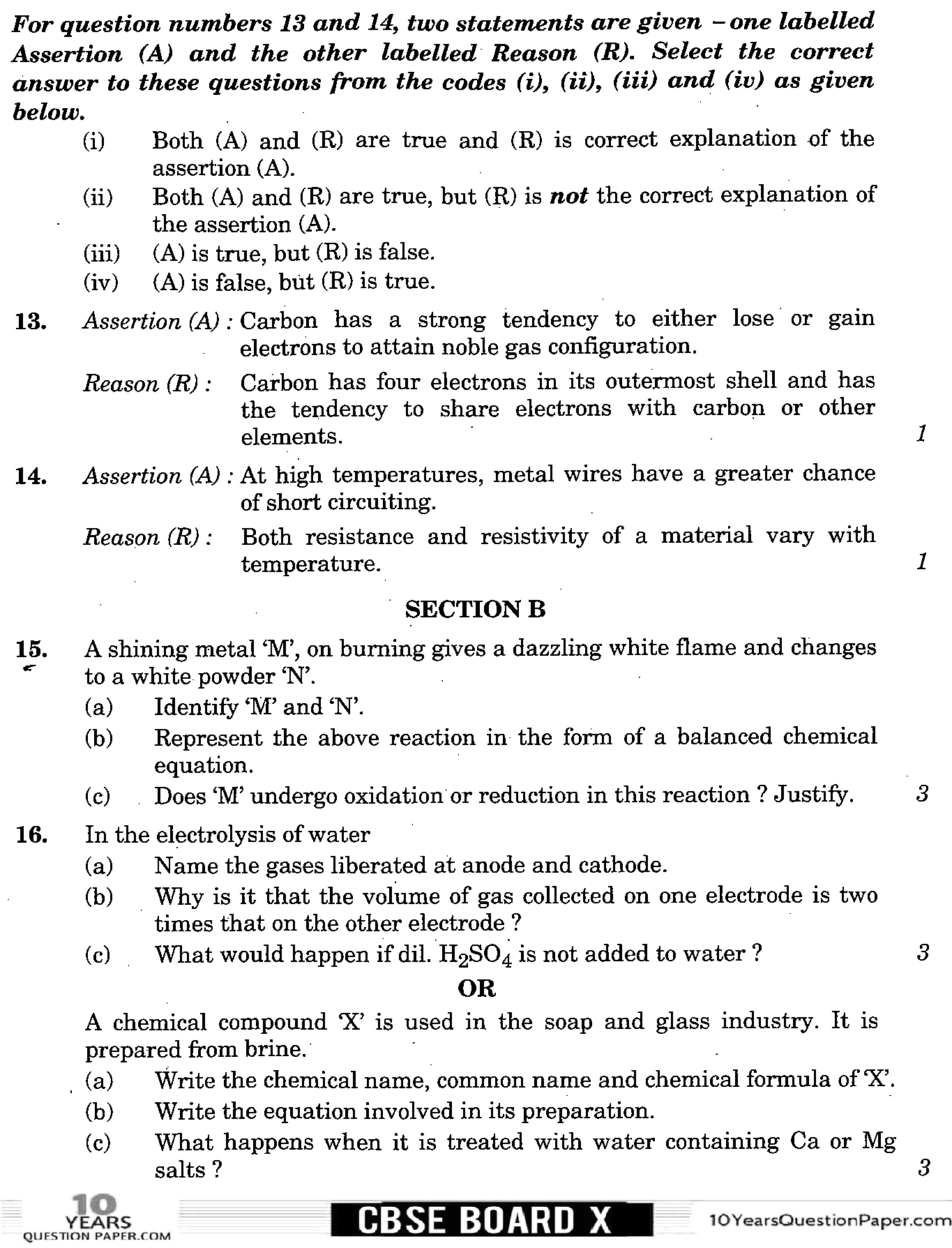
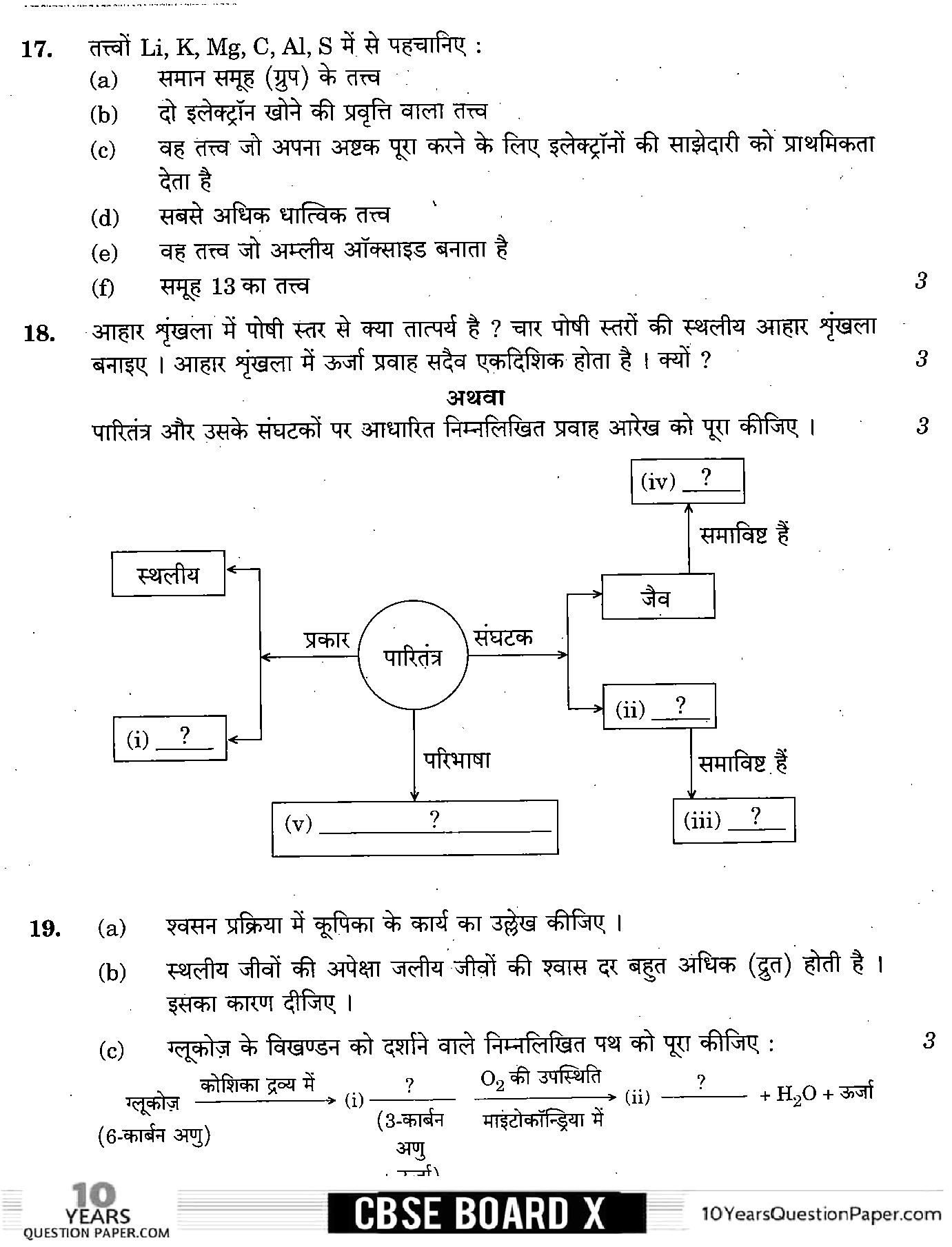
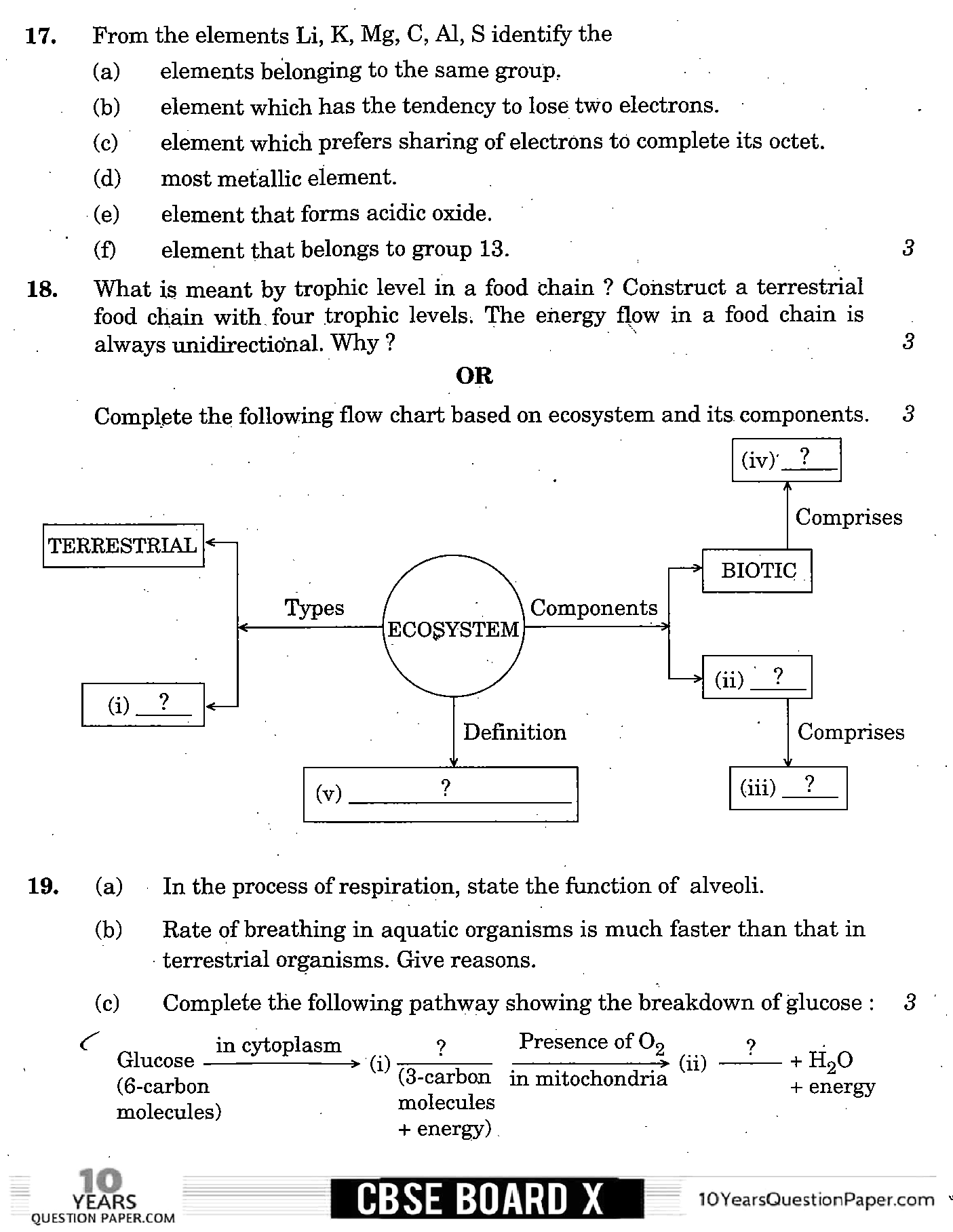
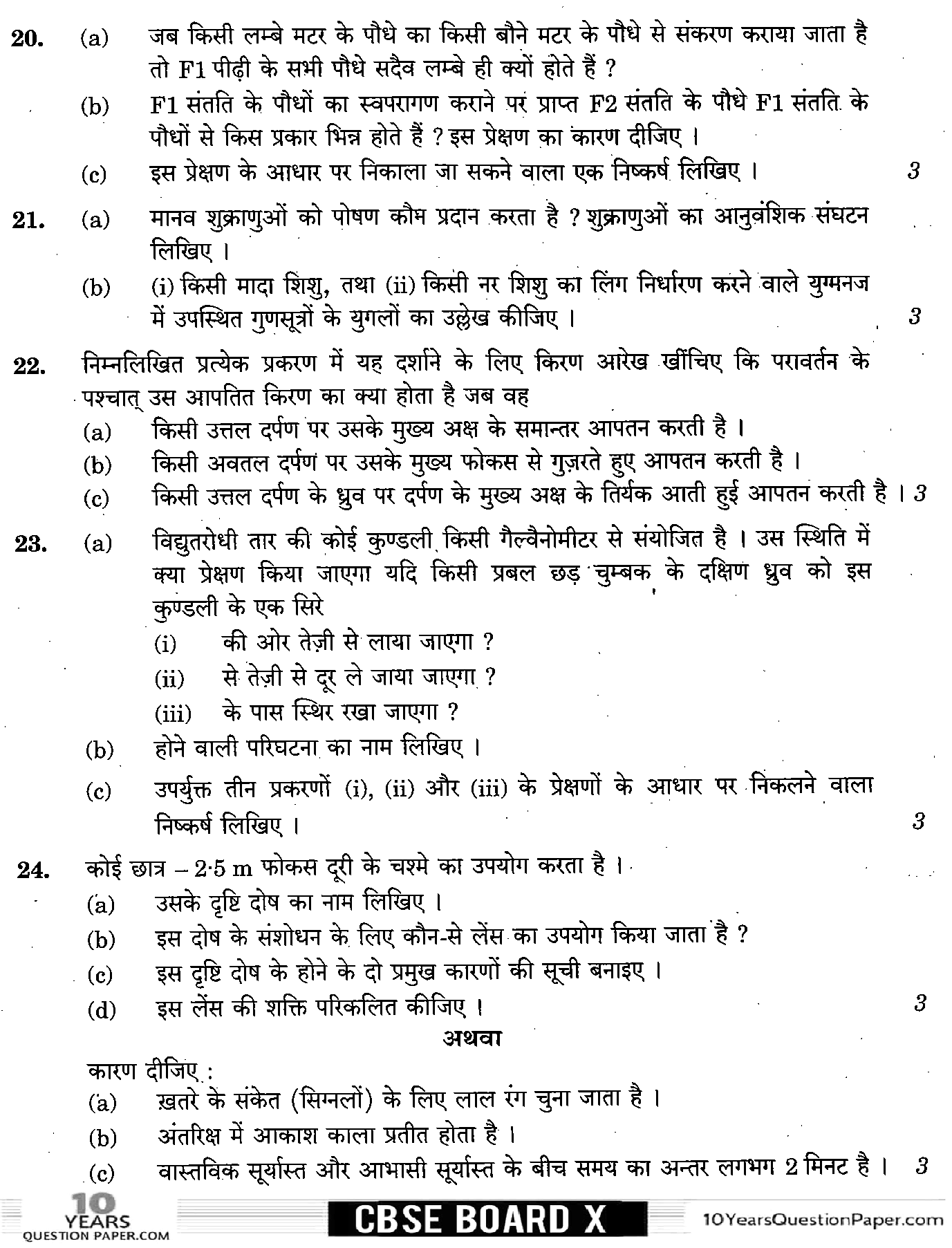
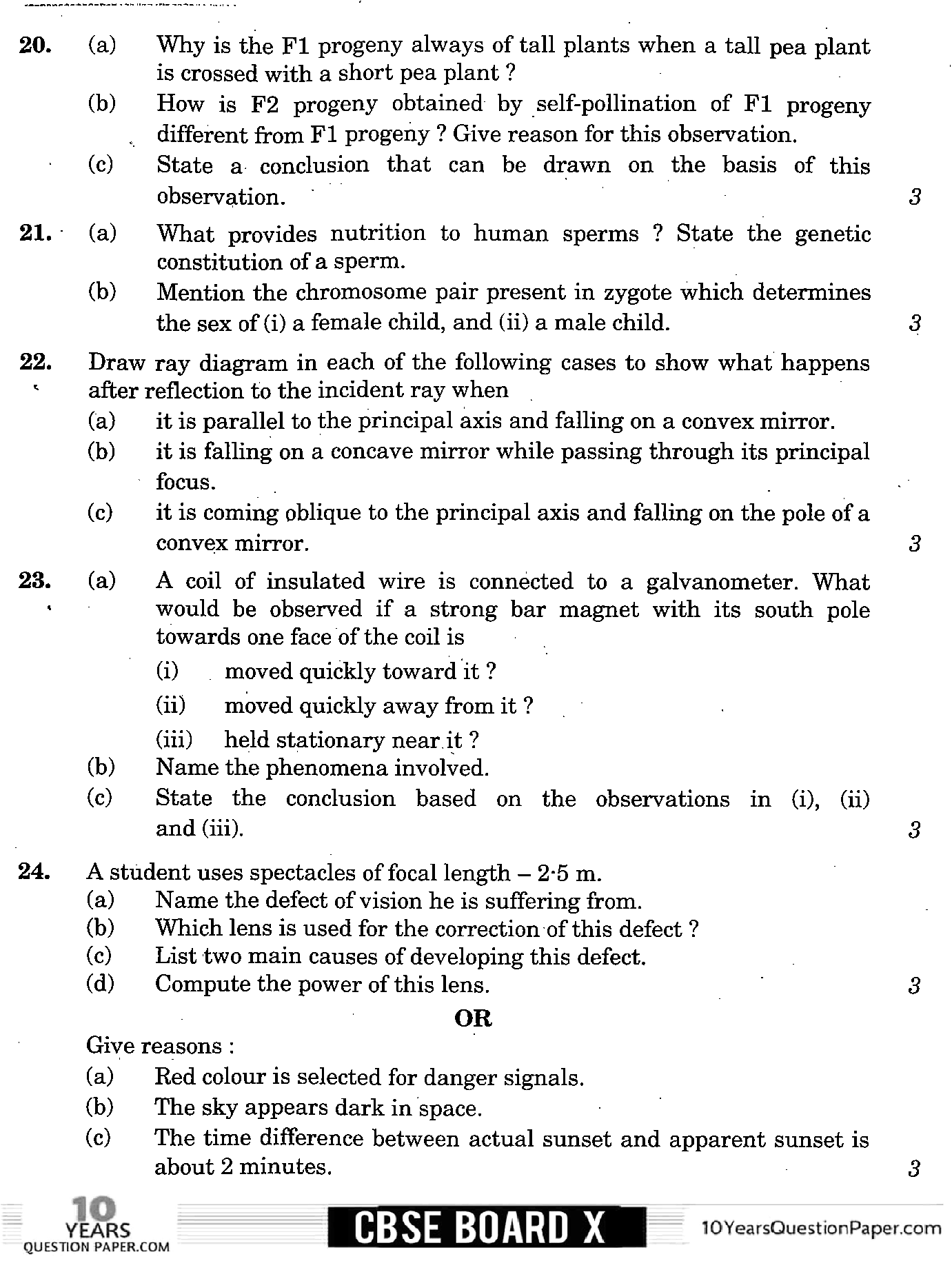
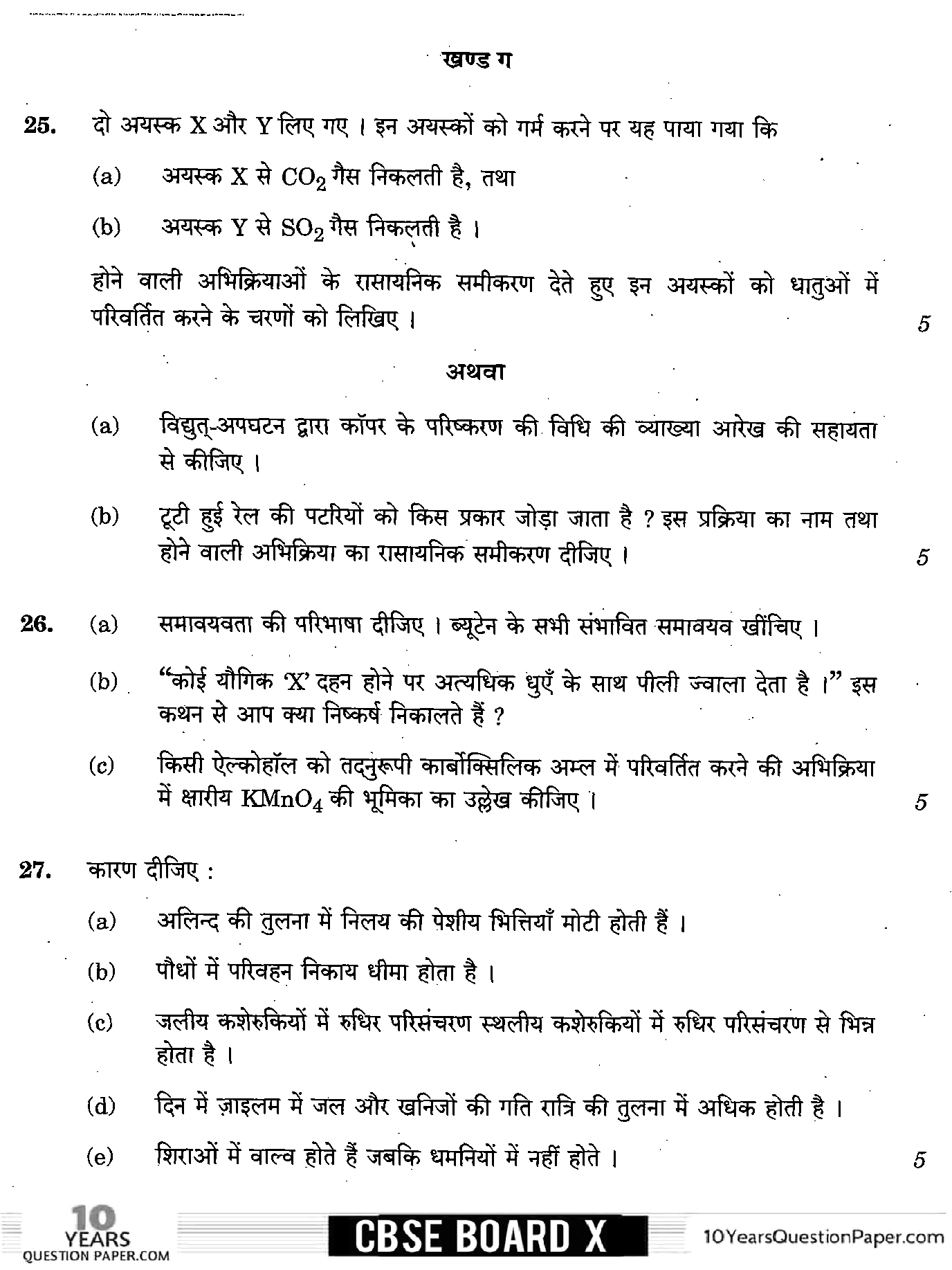
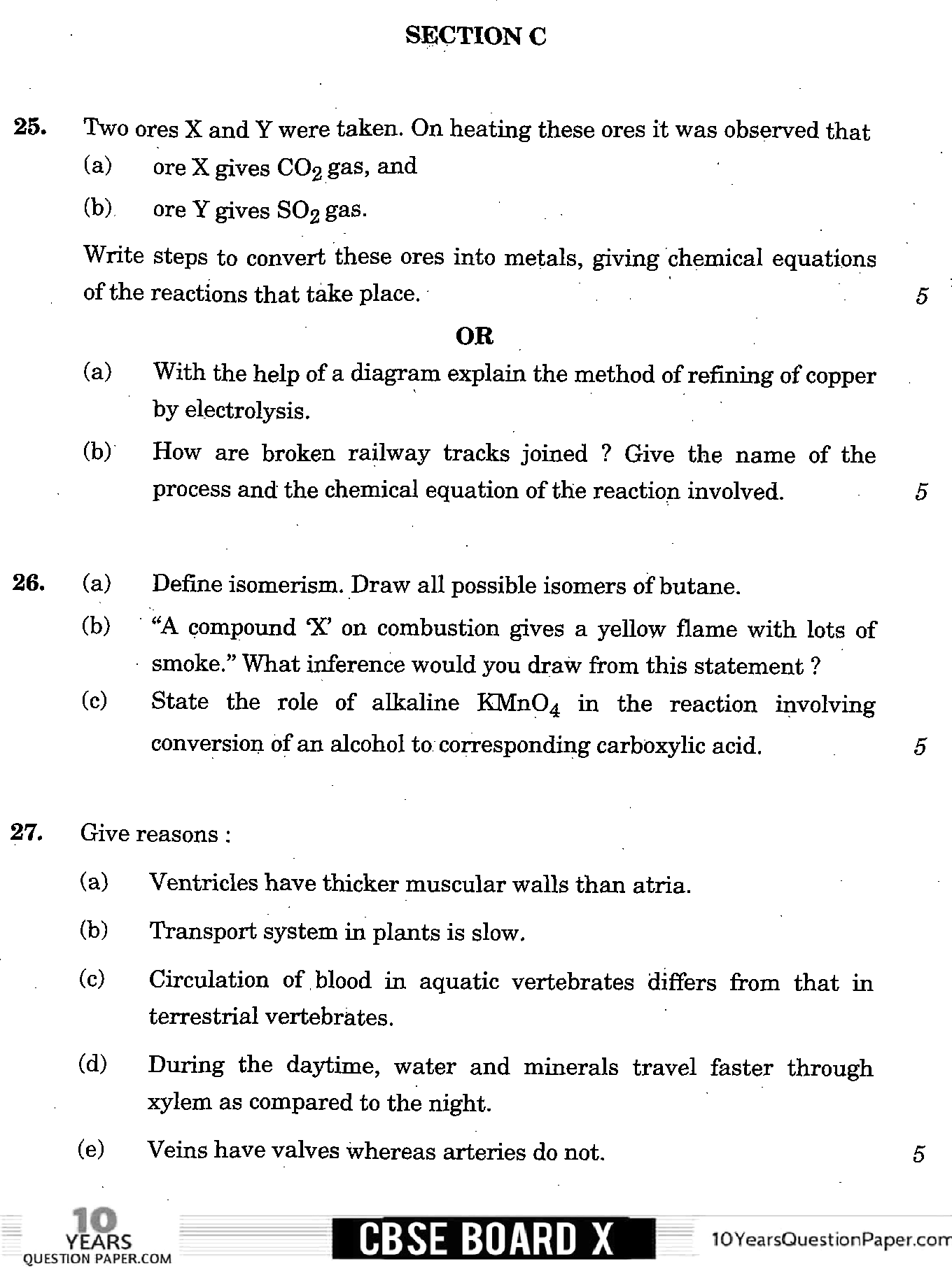
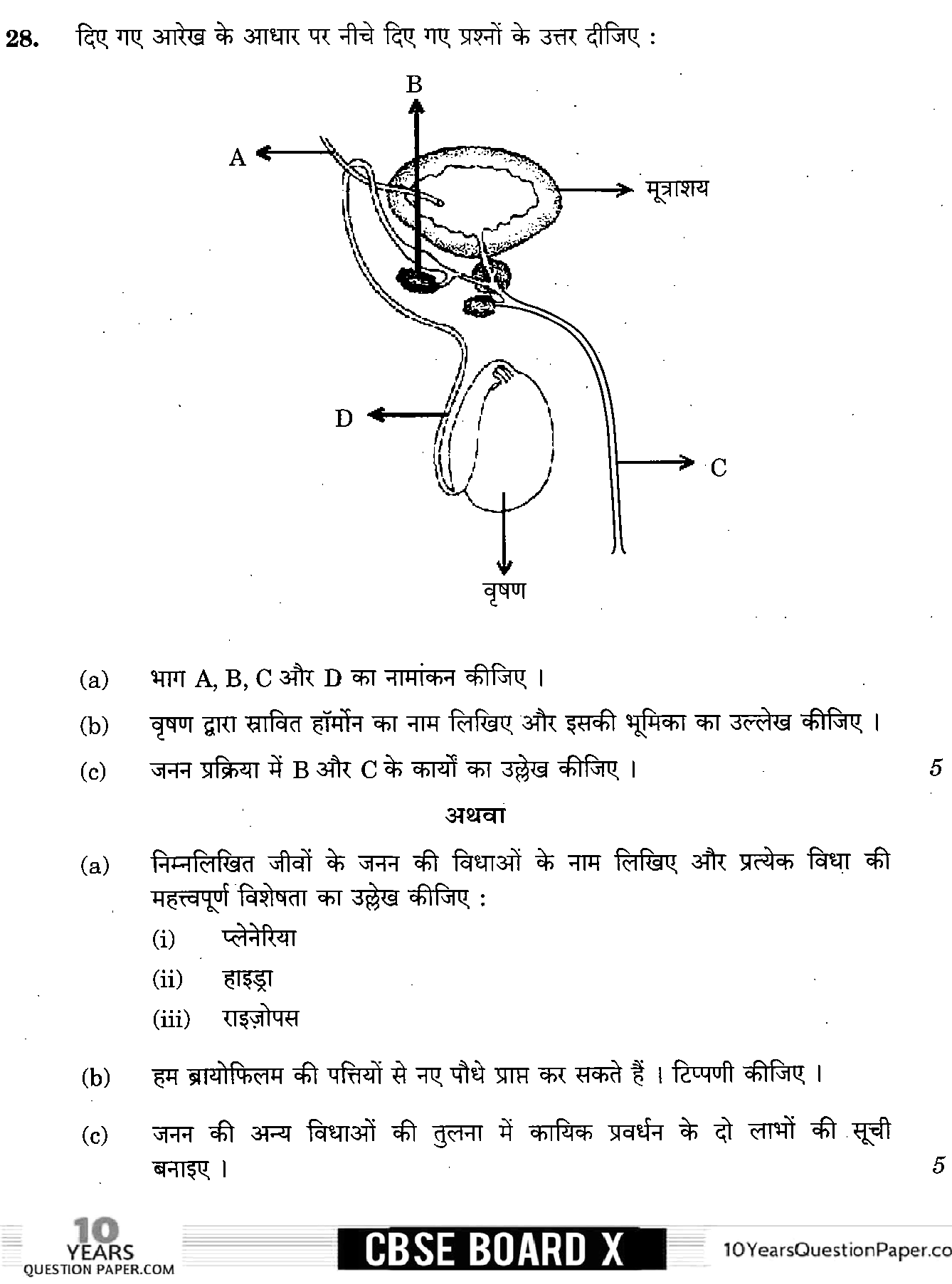
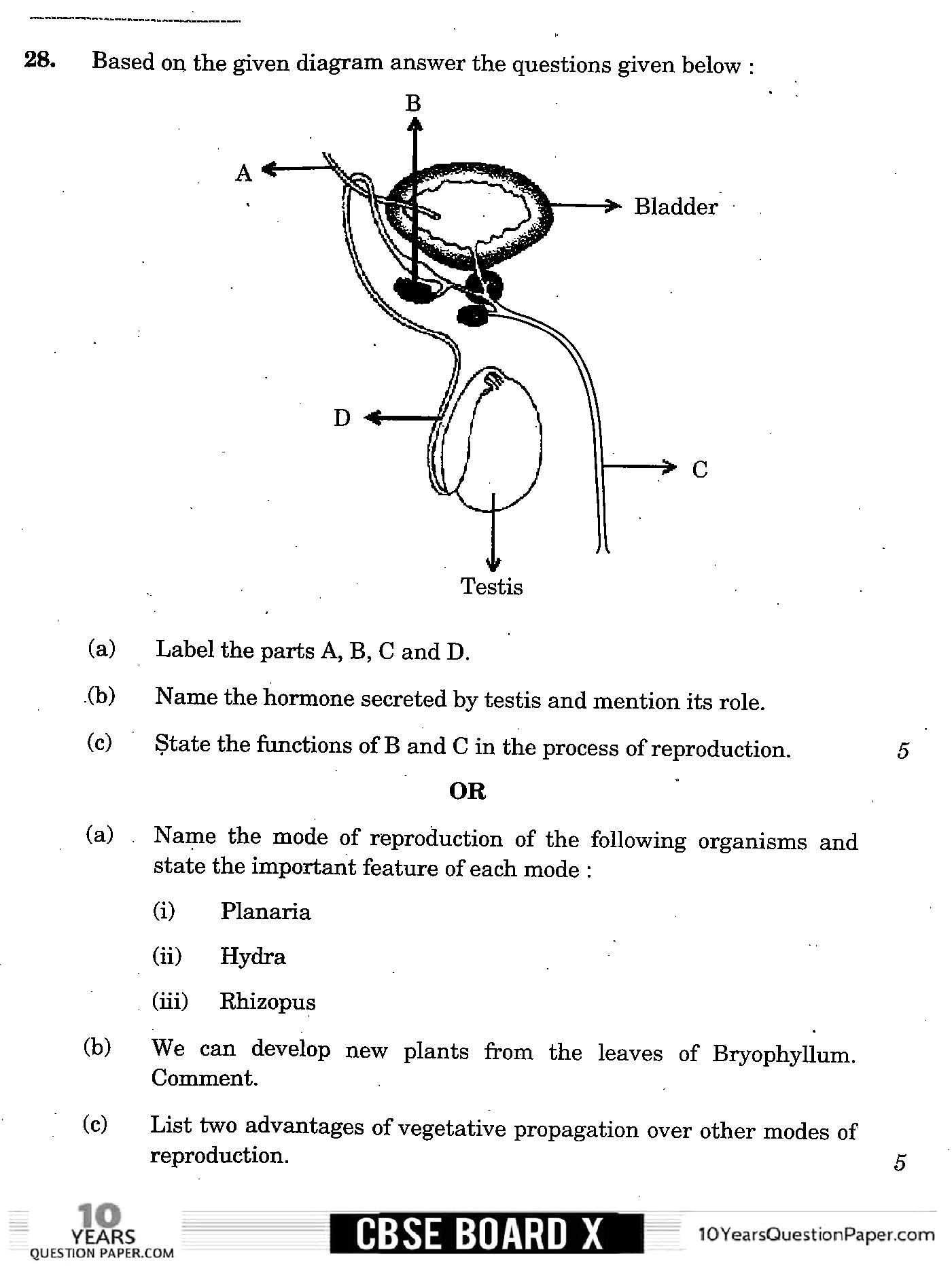
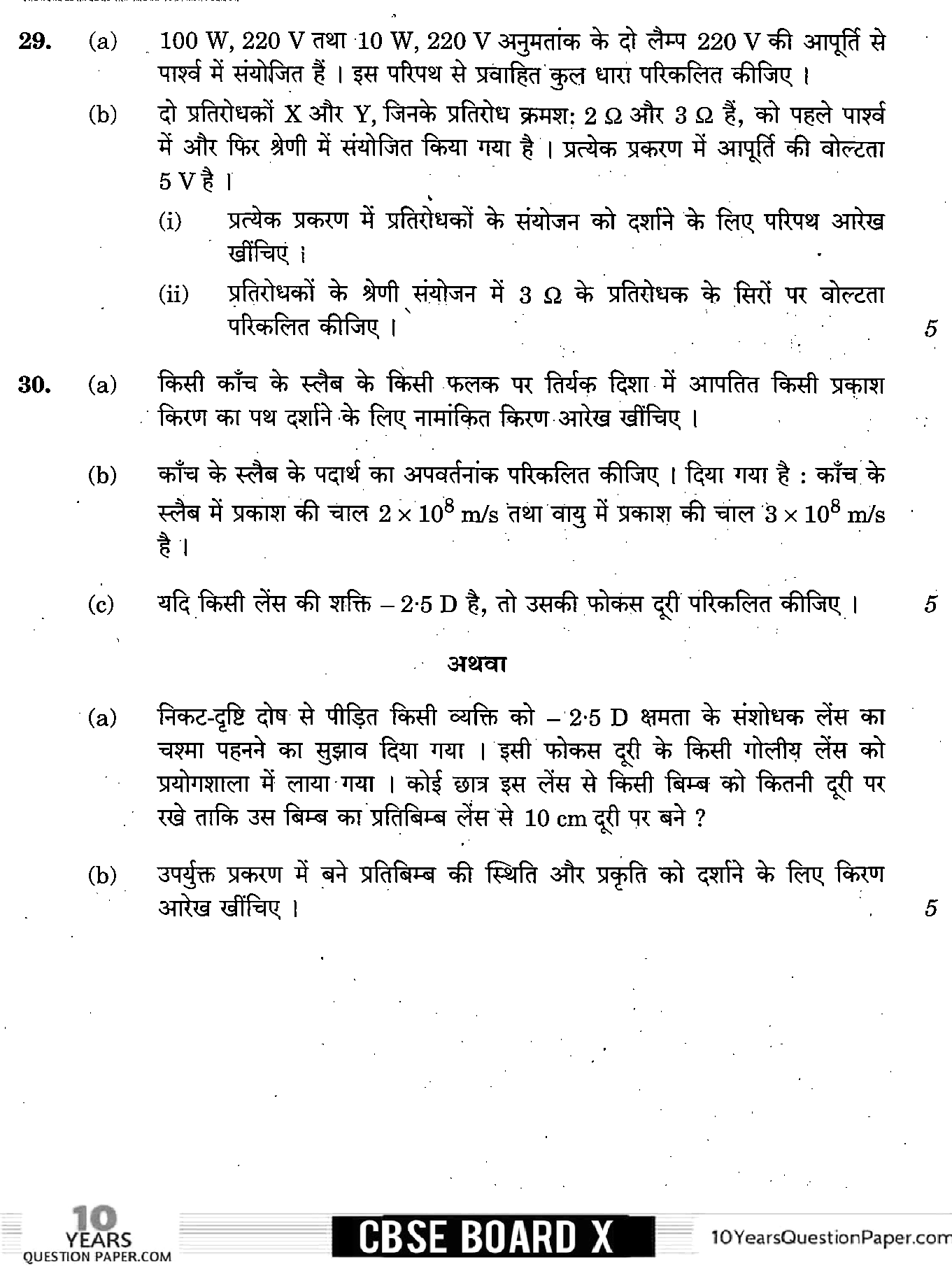
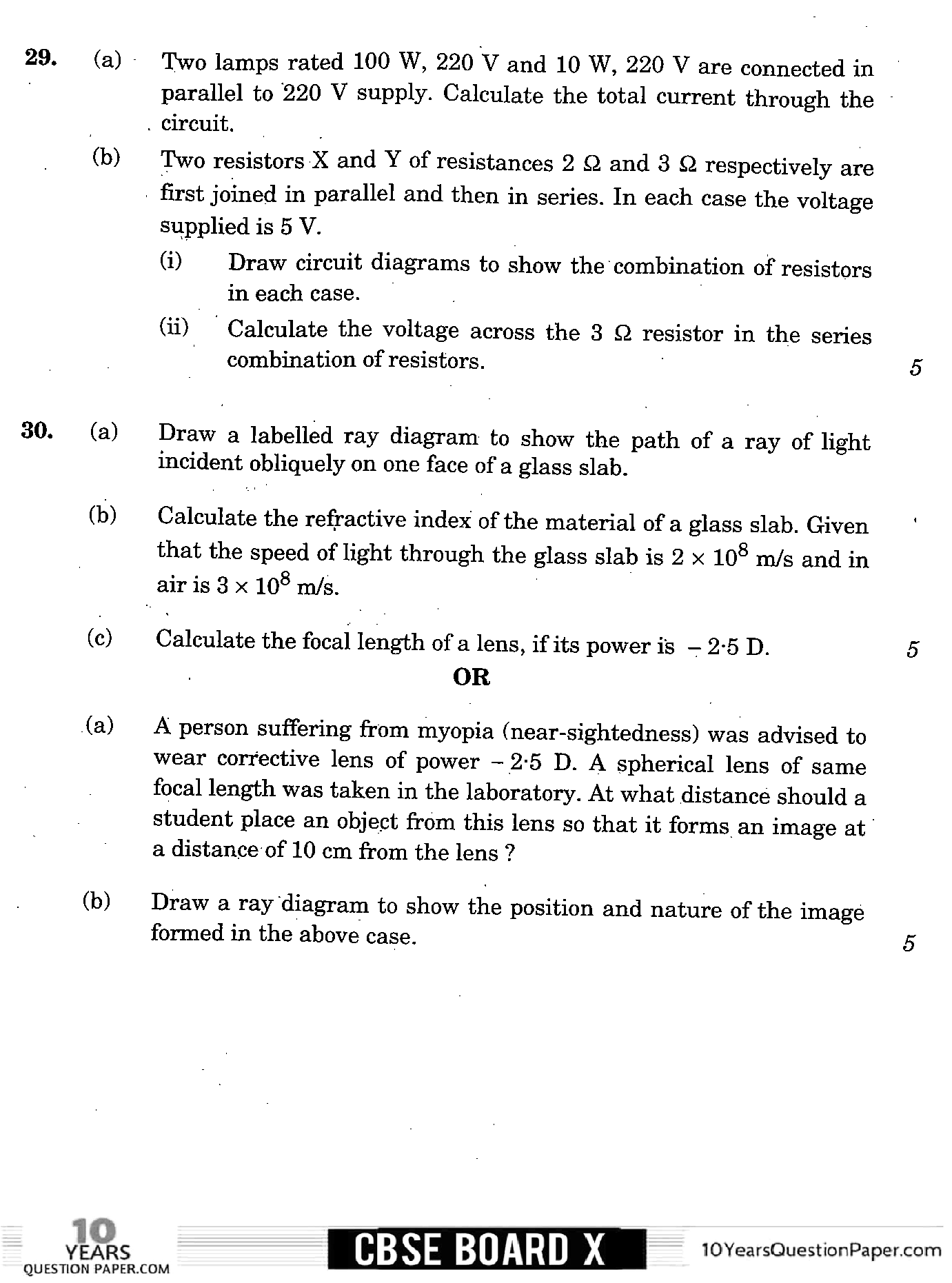
Science CBSE board 2020 Syllabus for Class X of Maximum Marks 80 - Chemical Substances - Nature & Behavior (25 Marks), World of Living (23 Marks), Natural Phenomenon (12 Marks), Effects of Current (13 Marks), Natural Resources (07 Marks).
The CBSE Class X Science question bank of 2020 will help you in your preparation for your final examination. This paper has been downloaded from cbse.nic.in, So download the 2020 Science paper in PDF with the answer key and start preparing for the written exam.
Downloaded from www.cbse.nic.in.
CBSE 2020 : Science question paper for class 10
Section A Question Number 1 to 14 - all questions or part thereof are of one mark each. These questions coprise Multiple Choise Questions (MCQ), Very Short Answer (VSA) and Assertion-Reason type questions. Answer to these questions should be given in one word or one sentence. Section B Question Number 15 to 24 are short answer type questions, carrying 3 marks each. Answer to these questions should not exceed 50 to 60 words. Section C Question Number 25 to 30 are long answer type questions, carrying 5 Marks each. Answer to these questions should not exceed 80 to 90 words.
SECTION A
Q1. Covalent compounds are generally poor conductors of electricity. Why ?
Q2. State the common characteristic of the following elements : Boron, Silicon, Germanium and Arsenic
OR
State the Periodic Law on which the Modern Periodic Table is based.
Q3. Answer question numbers 3(a) — 3(d) on the basis of your understanding of the following paragraph and the related studied concepts :
Solar power in India is a fast developing industry. The country's solar installed capacity reached 30.071 GW as of 31 July, 2019. India has the lowest capital cost per MW to install solar power plants. Solar electricity generation recorded nearly 3.4% of total utility electricity generation in January 2019. The following table shows Annual Solar Power Generation of the last six years.
| Year | Solar Power Generation (TWh) |
| 2013 - 14 | 3.35 |
| 2014 - 15 | 4.60 |
| 2015 - 16 | 7.45 |
| 2016 - 17 | 12.09 |
| 2017 - 18 | 25.87 |
| 2018 - 19 | 39.27 |
Our country is lucky to receive solar energy for the greater part of the year. It is estimated that during a year India receives the energy equivalent to more than 5000 trillion kWh from the Sun.
Q3(a). What are solar cells ?
Q3(b). How much voltage can be developed and how much electricity can be produced by one typical solar cell when exposed to the Sun ?
Q3(c). The future of power generation by solar energy is bright in India. Give reason.
Q3(d). List two advantages of solar cells.
Q4. Question numbers 4(a) — 4(d) are based on the table and related information in the passage given below.
Thyroid Stimulating Hormone (TSH) stimulates thyroid gland to produce thyroxine. Study the table given below.
Table : TSH levels during pregnancy
| Stage of pregnancy | Normal (mU/L) | Low (mU/L) | High (mU/L) |
| First trimester | 0.2 — 2.5 | < 0.2 | 2.5 — 10 |
| Second trimester | 0.3 — 3.0 | < 0.3 | 3.01 — 4.5 |
| Third trimester | 0.8 — 5.2 | < 0.8 | >5.3 |
It is important to monitor TSH levels during pregnancy. High TSH levels and hypothyroidism can especially affect chances of miscarriage. Therefore, proper medication in consultation with a doctor is required to regulate/control the proper functioning of the thyroid gland.
Q4(a). Give the full form of TSH.
Q4(b). State the main function of TSH.
Q4(c). Why do TSH levels in pregnant women need to be monitored ?
Q4(d). A pregnant woman has a TSH level of 8.95 mU/L. What care is needed for her ?
Q5. The image distance from the eye lens in the normal eye when we increase the distance of an object from the eye
(A) increases.
(B) decreases.
(C) remains unchanged.
(D) depends on the size of the eyeball.
Q6. The values of mA and 1.1.A are
(A) 10-6 A and 10-9 A respectively
(B) 10-3 A and 10-6 A respectively
(C) 10-3 A and 10-9 A respectively
(D) 10-6 A and 10-3 A respectively
Q7. A cylindrical conductor of length '1' and uniform area of cross-section 'A' has resistance 'R'. Another conductor of length 2.5 / and resistance 0.5 R of the same material has area of cross-section
(A) 5 A
(B) 2.5 A
(C) 0.5 A
(D) 1/5 A
Q8. Consider the following criticisms that are generally addressed when a new project is launched :
I. Displacement of peasants and local tribals without compensation.
II. Swallowing up large amount of public money without any benefits.
III. Deforestation and loss of biodiversity.
The criticisms about large dams in particular are
(A) I and II
(B) II and III
(C) I and III
(D) I, II and III
OR
Switching off unnecessary lights and fans and repairing leaking taps correctly defines which term of 5R's ?
(A) Recycle
(B) Reuse
(C) Repurpose
(D) Reduce
Q9. The Reni village of Garhwal is famous for
(A) Monocultures of pine, teak and eucalyptus.
(B) Chipko Movement.
(C) Extensive biodiversity.
(D) Participation of local people in efficient management of forests.
Q10. Strong heating of ferrous sulphate leads to the formation of a brown solid and two gases. This reaction can be categorised as
(A) displacement and redox.
(B) decomposition and redox.
(C) displacement and endothermic.
(D) decomposition and exothermic.
Q11. If 10 mL of H2SO4 is mixed with 10 mL of Mg(OH)2 of the same concentration, the resultant solution will give the following colour with universal indicator :
(A) Red
(B) Yellow
(C) Green
(D) Blue
Q12. An element X with atomic number 12 forms a compound with element Y with atomic number 17. The formula of the compound formed is
(A) XY
(B) XY2
(C) X2Y
(D) X2Y3
OR
An element X is forming acidic oxide. Its most probable position in the modern periodic table is
(A) Group 1 and Period 3
(B) Group 16 and Period 3
(C) Group 17 and Period 3
(D) Group 2 and Period 3
For question numbers 13 and 14, two statements are given - one labelled Assertion (A) and the other labelled Reason (R). Select the correct answer to these questions from the codes (i), (iii) and (iv) as given below.
(i). Both (A) and (R) are true and (R) is correct explanation of the assertion (A).
(ii). Both (A) and (R) are true, but (R) is not the correct explanation of the assertion (A).
(iii). (A) is true, but (R) is false.
(iv). (A) is false, but (R) is true.
Q13. Assertion (A) : Carbon has a strong tendency to either lose or gain electrons to attain noble gas configuration.
Reason (R) : Carbon has four electrons in its outermost shell and has the tendency to share electrons with carbon or other elements.
Q14. Assertion (A) : At high temperatures, metal wires have a greater chance of short circuiting.
Reason (R) : Both resistance and resistivity of a material vary with temperature.
SECTION B
Q15. A shining metal 'M', on burning gives a dazzling white flame and changes to a white powder 'N'.
(a) Identify 'M' and 'N'.
(b) Represent the above reaction in the form of a balanced chemical equation.
(c) Does 'M' undergo oxidation or reduction in this reaction ? Justify
Q16. In the electrolysis of water
(a) Name the gases liberated at anode and cathode.
(b) Why is it that the volume of gas collected on one electrode is two times that on the other electrode ?
(c) What would happen if dil. H2SO4 is not added to water ?
OR
A chemical compound 'X' is used in the soap and glass industry. It is prepared from brine.
(a) Write the chemical name, common name and chemical formula of 'X'.
(b) Write the equation involved in its preparation.
(c) What happens when it is treated with water containing Ca or Mg salts ?
Q17. From the elements Li, K, Mg, C, Al, S identify the
(a) elements belonging to the same group.
(b) element which has the tendency to lose two electrons.
(c) element which prefers sharing of electrons to complete its octet.
(d) most metallic element.
(e) element that forms acidic oxide.
(f) element that belongs to group 13.
Q18. What is meant by trophic level in a food chain ? Construct a terrestrial food chain with four trophic levels. The energy flow in a food chain is always unidirectidnal. Why ?
OR
Complete the following flow chart based on ecosystem and its components.
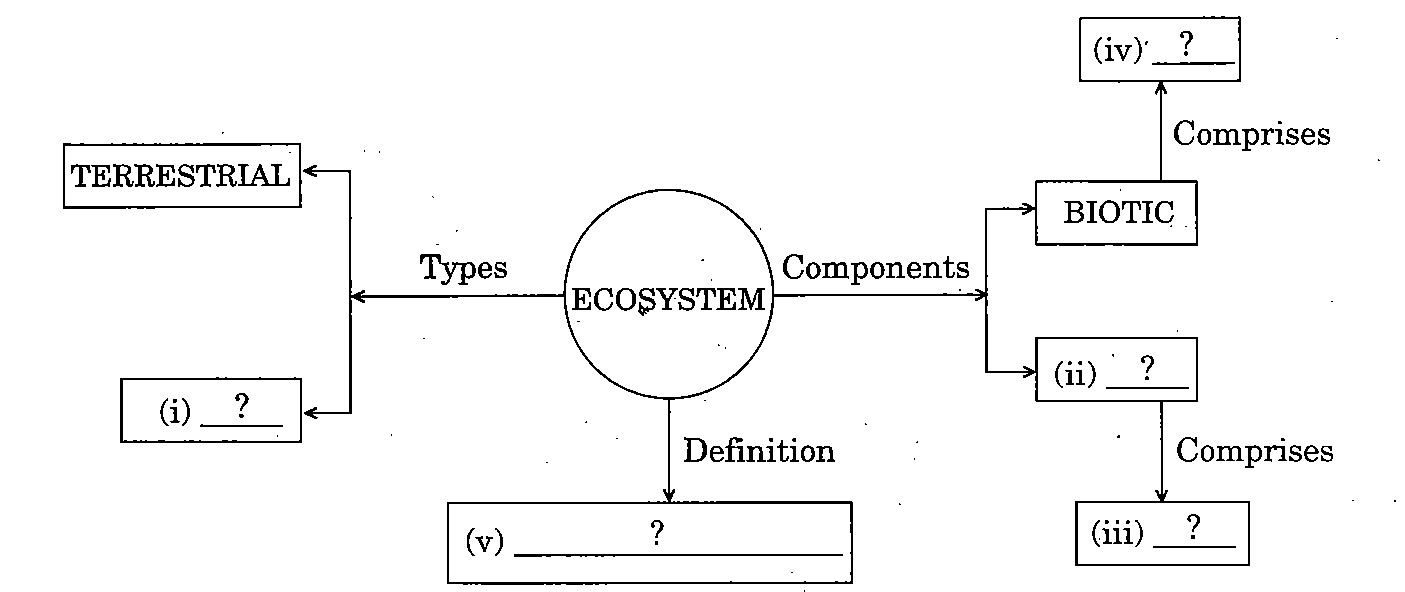
Q19.
(a) In the process of respiration, state the function of alveoli.
(b) Rate of breathing in aquatic organisms is much faster than that in terrestrial organisms. Give reasons.
(c) Complete the following pathway showing the breakdown of glucose :

Q20.
(a) Why is the Fl progeny always of tall plants when a tall pea plant is crossed with a short pea plant ?
(b) How is F2 progeny obtained by self-pollination of Fl progeny different from Fl progeny ? Give reason for this observation.
(c) State a conclusion that can be drawn on the basis of this observation
Q21.
(a) What provides nutrition to human sperms ? State the genetic constitution of a sperm.
(b) Mention the chromosome pair present in zygote which determines the sex of (i) a female child, and (ii) a male child.
Q22. Draw ray diagram in each of the following cases to show what happens after reflection to the incident ray when
(a) it is parallel to the principal axis and falling on a convex mirror.
(b) it is falling on a concave mirror while passing through its principal focus.
(c) it is coming oblique to the principal axis and falling on the pole of a convex mirror
Q23.
(a) A coil of insulated wire is connected to a galvanometer. What would be observed if a strong bar magnet with its south pole towards one face of the coil is
(i) moved quickly toward it ?
(ii) moved quickly away from it ?
(iii) held stationary near it ?
(b) Name the phenomena involved.
(c) State the conclusion based on the observations in (i), and (iii)
Q24. A student uses spectacles of focal length — 2.5 m.
(a) Name the defect of vision he is suffering from.
(b) Which lens is used for the correction of this defect ?
(c) List two main causes of developing this defect.
(d) Compute the power of this lens.
OR
Give reasons :
(a) Red colour is selected for danger signals.
(b) The sky appears dark in space.
(c) The time difference between actual sunset and apparent sunset is about 2 minutes.
SECTION C
Q25. Two ores X and Y were taken. On heating these ores it was observed that
(a) ore X gives CO2 gas, and
(b) ore Y gives SO2 gas.
Write steps to convert these ores into metals, giving chemical equations of the reactions that take place.
OR
(a) With the help of a diagram explain the method of refining of copper by electrolysis.
(b) How are broken railway tracks joined ? Give the name of the process and the chemical equation of the reaction involved.
Q26.
(a) Define isomerism. Draw all possible isomers of butane.
(b) "A compound 'X' on combustion gives a yellow flame with lots of smoke." What inference would you draw from this statement ?
(c) State the role of alkaline KMnO4 in the reaction involving conversion of an alcohol to corresponding carboxylic acid.
Q27. Give reasons :
(a) Ventricles have thicker muscular walls than atria.
(b) Transport system in plants is slow.
(c) Circulation of blood in aquatic vertebrates differs from that in terrestrial vertebrates
(d) During the daytime, water and minerals travel faster through xylem as compared to the night.
(e) Veins have valves whereas arteries do not.
Q28. Based on the given diagram answer the questions given below :
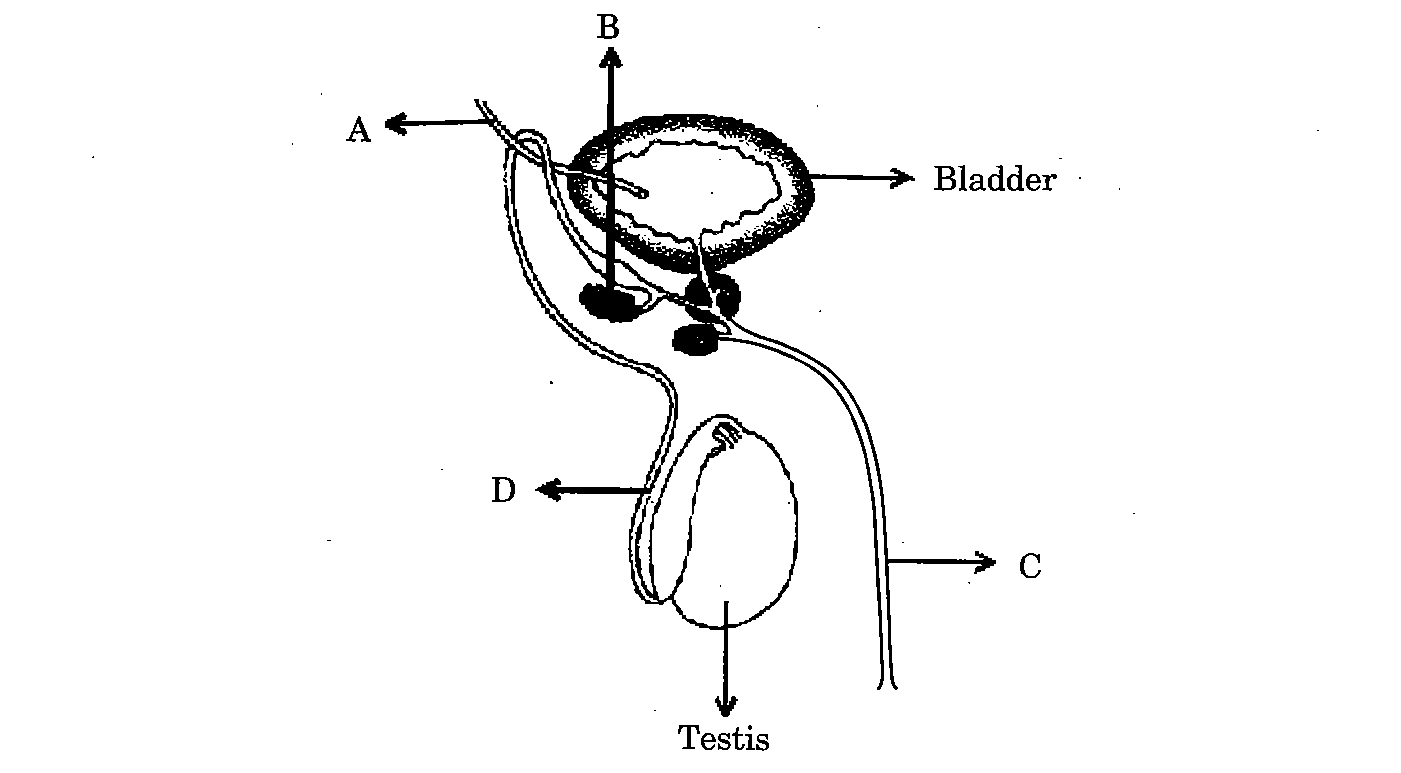
(a) Label the parts A, B, C and D.
(b) Name the hormone secreted by testis and mention its role.
(c) State the functions of B and C in the process of reproduction.
OR
(a) Name the mode of reproduction of the following organisms and state the important feature of each mode :
(i) Planaria
(ii) Hydra
(iii) Rhizopus
(b) We can develop new plants from the leaves of Bryophyllum. Comment.
(c) List two advantages of vegetative propagation over other modes of reproduction.
Q29.
(a) Two lamps rated 100 W, 220 V and 10 W, 220 V are connected in parallel to 220 V supply. Calculate the total current through the. circuit.
(b) Two resistors X and Y of resistances 2 Q and 3 Q respectively are first joined in parallel and then in series. In each case the voltage supplied is 5 V.
(i) Draw circuit diagrams to show the combination of resistors in each case.
(ii) Calculate the voltage across the 3 Q resistor in the series combination of resistors.
Q30.
(a) Draw a labelled ray diagram to show the path of a ray of light incident obliquely on one face of a glass slab.
(b) Calculate the refractive index of the material of a glass slab. Given that the speed of light through the glass slab is 2 x 108 m/s and in air is 3 x 108m/s.
(c) Calculate the focal length of a lens, if its power is - 2.5 D.
OR
(a) A person suffering from myopia (near-sightedness) was advised to wear corrective lens of power - 2.5 D. A spherical lens of same focal length was taken in the laboratory. At what distance should a student place an object from this lens so that it forms, an image at a distance of 10 cm from the lens ?
(b) Draw a ray diagram to show the position and nature of the image formed in the above case.

Hey! So, have you start solving the CBSE Class 10 Science 2020 Previous Year Question Paper?